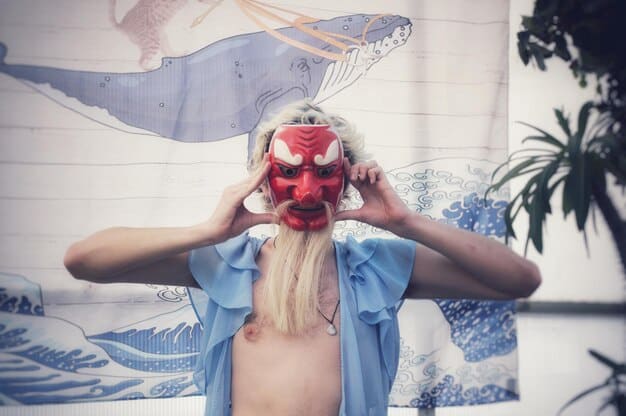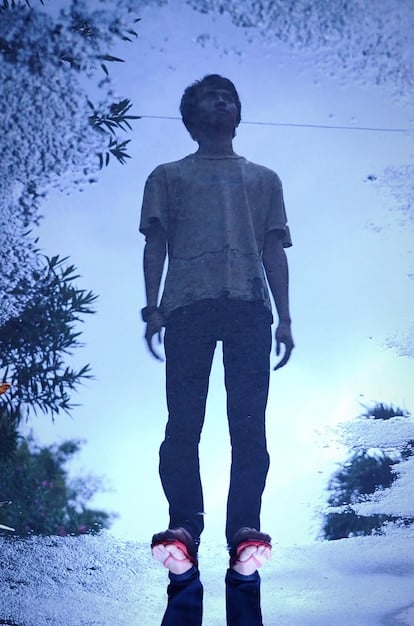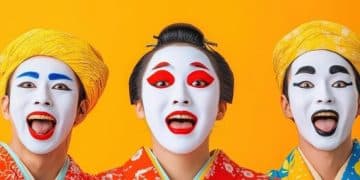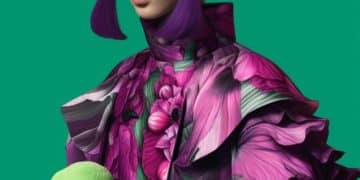Understanding Japanese Drama Character Archetypes: Tsundere, Yandere, & More

Advertisements
Japanese drama character archetypes, such as Tsundere, Yandere, and others, are recurring roles with distinct personalities that audiences frequently encounter, shaping narrative expectations and providing a shorthand for character understanding in J-dramas and anime.
Dive into the captivating world of Japanese dramas and discover the iconic character archetypes that make these stories so engaging. From the sweet to the sinister, understanding these tropes enriches your viewing experience. Let’s explore the essential **Japanese drama character archetypes: Understanding the Tsundere, Yandere, and More**.
Anúncios
Japanese Drama Character Archetypes: A Deep Dive
Japanese dramas, often called J-dramas, are known for their compelling narratives and memorable characters. These characters frequently fall into recognizable archetypes that shape the stories and resonate with audiences. Understanding these archetypes can greatly enhance your appreciation of J-dramas.

The Significance of Archetypes
Archetypes are recurring patterns of behavior, personality, and roles that have become conventional in storytelling. In J-dramas, these archetypes serve as a shorthand, allowing viewers to quickly understand and relate to characters. They provide a framework for building complex narratives and exploring universal themes.
Anúncios
Cultural Context
The popularity of these archetypes is deeply rooted in Japanese culture, where societal expectations and interpersonal dynamics play a significant role in character development. Understanding the cultural context helps explain why certain archetypes are so prevalent and beloved.
These archetypes are more than just stereotypes; they are nuanced and multifaceted characters that reflect different aspects of human behavior. Let’s explore some of the most common and intriguing Japanese drama character archetypes:
- Tsundere: Characters who are initially cold and hostile but gradually reveal a warmer, gentler side.
- Yandere: Characters who are initially loving and gentle but become obsessively violent and possessive.
- Genki Girl: Energetic and cheerful characters who bring optimism to the story.
- Kuudere: Characters who are calm and stoic, showing emotions rarely.
These archetypes provide a framework for understanding characters, though they’re often combined and subverted to create unique personalities. This provides J-drama writers the space to create a recognizable, yet, complex story.
The Iconic Tsundere: Cold Outside, Warm Inside
The **Tsundere** is one of the most beloved and recognizable archetypes in Japanese dramas and anime. Known for their initially cold and often hostile demeanor, Tsunderes gradually reveal a softer, more caring side as they develop relationships with others. Their complexity and hidden warmth make them incredibly compelling characters.
Defining Characteristics
Tsunderes often display a range of contradictory behaviors, making them both frustrating and endearing. Their outward coldness is typically a defense mechanism, masking insecurities or a fear of vulnerability. They may use harsh words and dismissive gestures, but their actions often betray their true feelings.
Why They’re Popular
The appeal of the Tsundere lies in their journey of self-discovery and emotional growth. Viewers enjoy witnessing their gradual transformation from icy to affectionate. This transformation makes them incredibly relatable, especially to those who might struggle with expressing vulnerability.
Examples in J-Dramas
Many memorable J-drama characters embody the Tsundere archetype. Some notable examples include:
- Hana Yori Dango: Tsukushi Makino, the fiercely independent protagonist, often clashes with the wealthy and arrogant Tsukasa Domyoji, but their relationship evolves into a deep, caring connection.
- Itazura na Kiss: Kotoko Aihara’s persistence eventually melts the cold exterior of Naoki Irie, revealing his hidden affection.
- Rich Man, Poor Woman: Toru Hyuga initially comes off as arrogant. His hidden emotions are gradually revealed by Makoto Sawaki’s kind personality.
Tsugare characters are often combined with other archetypes to broaden the J-drama story being told. This may lead to more complex plots and dynamic drama.
The Intense Yandere: Love to the Extreme
In contrast to the Tsundere, the **Yandere** archetype represents love taken to its most extreme and often dangerous form. Yanderes are initially portrayed as sweet, gentle, and loving characters, but their affection quickly spirals into obsessive and violent behavior when they feel threatened or rejected.
Defining Characteristics
The most defining characteristic of a Yandere is their willingness to do anything for their love interest, even if it means resorting to violence, manipulation, or even murder. Their possessiveness knows no bounds, and they often isolate their beloved from anyone they perceive as a threat.
Why They’re Controversial
The Yandere archetype is often controversial due to its portrayal of extreme violence and unhealthy relationships. However, they are compelling characters because they explore the darker aspects of human nature and the destructive potential of unchecked emotions. Stories with them involved often serve as cautionary tales about the dangers of obsession and the importance of healthy boundaries.

Examples in J-Dramas
While less common in mainstream J-dramas, the Yandere archetype can be found in darker, more psychological stories. Examples include:
- Mirai Nikki (Future Diary): Yuno Gasai is the quintessential Yandere, willing to kill anyone who stands between her and her beloved Yukiteru.
- Higurashi no Naku Koro ni (When They Cry): Rena Ryuugu exhibits Yandere tendencies as she becomes increasingly paranoid and violent in her efforts to protect her friends.
- School Days: Kotonoha Katsura’s descent into madness exemplifies the destructive consequences of unchecked obsession and jealousy.
Often portrayed in more mature drama, the Yandere type serves as a symbol to the more obsessive, extreme sides of romance.
The Energetic Genki Girl: Sunshine Personified
The **Genki Girl** archetype is a breath of fresh air in the world of J-dramas. These characters are known for their boundless energy, infectious optimism, and unwavering cheerfulness. They bring light and positivity to any situation, often serving as the emotional backbone of the story.
Defining Characteristics
Genki Girls are typically outgoing, enthusiastic, and always ready to lend a helping hand. They have a knack for lifting the spirits of those around them and inspiring others to overcome challenges. Their energy is contagious, and they often serve as a catalyst for positive change.
Why They’re Appealing
The appeal of the Genki Girl lies in their ability to brighten even the darkest of stories. They represent hope, resilience, and the power of positivity. Viewers are drawn to their unwavering spirit and their ability to find joy in the simplest of things. Their optimism is inspiring.
Examples in J-Dramas
Genki Girls are a staple in many J-dramas, providing a balance to the more serious or dramatic elements of the story. Notable examples include:
- Nodame Cantabile: Megumi “Nodame” Noda is a quirky and eccentric pianist whose infectious energy and unwavering optimism inspire those around her.
- Ouran High School Host Club: Haruhi Fujioka’s down-to-earth and cheerful demeanor challenges the superficiality of the wealthy students at Ouran Academy.
- Kimi ni Todoke: Sawako Kuronuma’s genuine kindness and unwavering optimism help her overcome social awkwardness and form meaningful connections.
Genki Girls bring smiles and lighten the mood for viewers. Their infectious attitudes are contagious and can quickly brighten the world around them.
The Stoic Kuudere: Calm, Cool, and Collected
The **Kuudere** archetype embodies calmness, coolness, and emotional reserve. These characters are often perceived as distant or aloof, but beneath their stoic exterior lies a deep well of emotions that they rarely reveal. Their quiet strength and understated kindness make them intriguing and often misunderstood characters.
Defining Characteristics
Kuuderes are characterized by their calm demeanor, logical thinking, and ability to remain composed in stressful situations. They are not necessarily emotionless, but they tend to express their feelings subtly and only when necessary. This calm nature provides depth in a world of more pronounced emotional output.
Why They’re Admired
The appeal of the Kuudere lies in their quiet strength and their ability to offer support without needing to be the center of attention. Viewers admire their composure and their unwavering loyalty to those they care about. Their subtle gestures of affection are often more meaningful than grand displays of emotion.
Examples in J-Dramas
Kuuderes often play pivotal roles in J-dramas, providing stability and wisdom to the other characters. Notable examples include:
- Mischievous Kiss: Love in Tokyo: Naoki Irie, though sometimes considered a Tsundere, exhibits Kuudere traits through his calm demeanor and logical approach to problems.
- Code Blue: Kosaku Aizawa’s cool and collected nature under pressure makes him a reliable and respected member of the medical team.
- Antique Bakery: Keiichiro Tachibana, while haunted by his past, maintains a composed exterior as he runs his bakery and supports his employees.
These characters provide a calm, strong spirit to their respected J-dramas. Often misunderstood at first, they open up and show their dynamic nature.
Beyond the Archetypes: Nuance and Complexity
While these archetypes provide a useful framework for understanding J-drama characters, it’s important to remember that they are not rigid boxes. Many characters blend traits from multiple archetypes or subvert expectations entirely. This nuance and complexity make J-dramas so compelling.
Hybrid Characters
Many characters exhibit traits from multiple archetypes, creating unique and dynamic personalities. For example, a character might be both a Tsundere and a Genki Girl, displaying coldness and hostility in some situations while being energetic and cheerful in others.
Subverting Expectations
Some J-dramas challenge traditional archetypes by presenting characters who initially seem to fit a certain mold but ultimately defy expectations. This subversion can add depth and complexity to the story, forcing viewers to reconsider their assumptions about the characters.
The Importance of Context
The effectiveness of these archetypes often depends on the cultural context of the story. What works in one J-drama might not work in another due to differences in setting, tone, and target audience. It’s important to consider the broader cultural context when analyzing these characters.
| Key Character | Brief Description |
|---|---|
| 😠 Tsundere | Initially cold but reveals a warmer side. |
| 😍 Yandere | Sweet at first, then obsessively violent. |
| 😄 Genki Girl | Energetic and brings optimism. |
| 😎 Kuudere | Calm and rarely shows emotions. |
FAQ
▼
A character archetype in Japanese dramas refers to recurring character types with specific traits, behaviors, and roles. These archetypes are commonly used to create relatable characters. They’re are found in most J-dramas.
▼
A Tsundere is a character who is initially cold and hostile, but gradually reveals a warmer, gentler side as they form relationships with others. This may come across as rude at first.
▼
Yes, Yanderes often serve as antagonists due to their violent and obsessive behavior. But they can also viewed as more sympathetic depending on the J-drama. Yanderes explore complex themes.
▼
While they’re mostly optimistic, Genki Girls can face challenges and experience sadness. Their defining trait is their resilience and ability to bounce back, often offering a beacon of positivity.
▼
Yes, many characters blend traits from multiple archetypes, creating unique and dynamic personalities. This mix adds depth to the characters and results in more complex and engaging stories for viewers.
Conclusion
In conclusion, these **Japanese drama character archetypes**, offer a framework for better understanding the narratives, and characters. While commonly used, these characters are still diverse in the way they are presented. They can range from the iconic Tsundere’s slow reveal, to the brightness of a Genki Girl. These archetypes are key in making J-dramas enjoyable.





